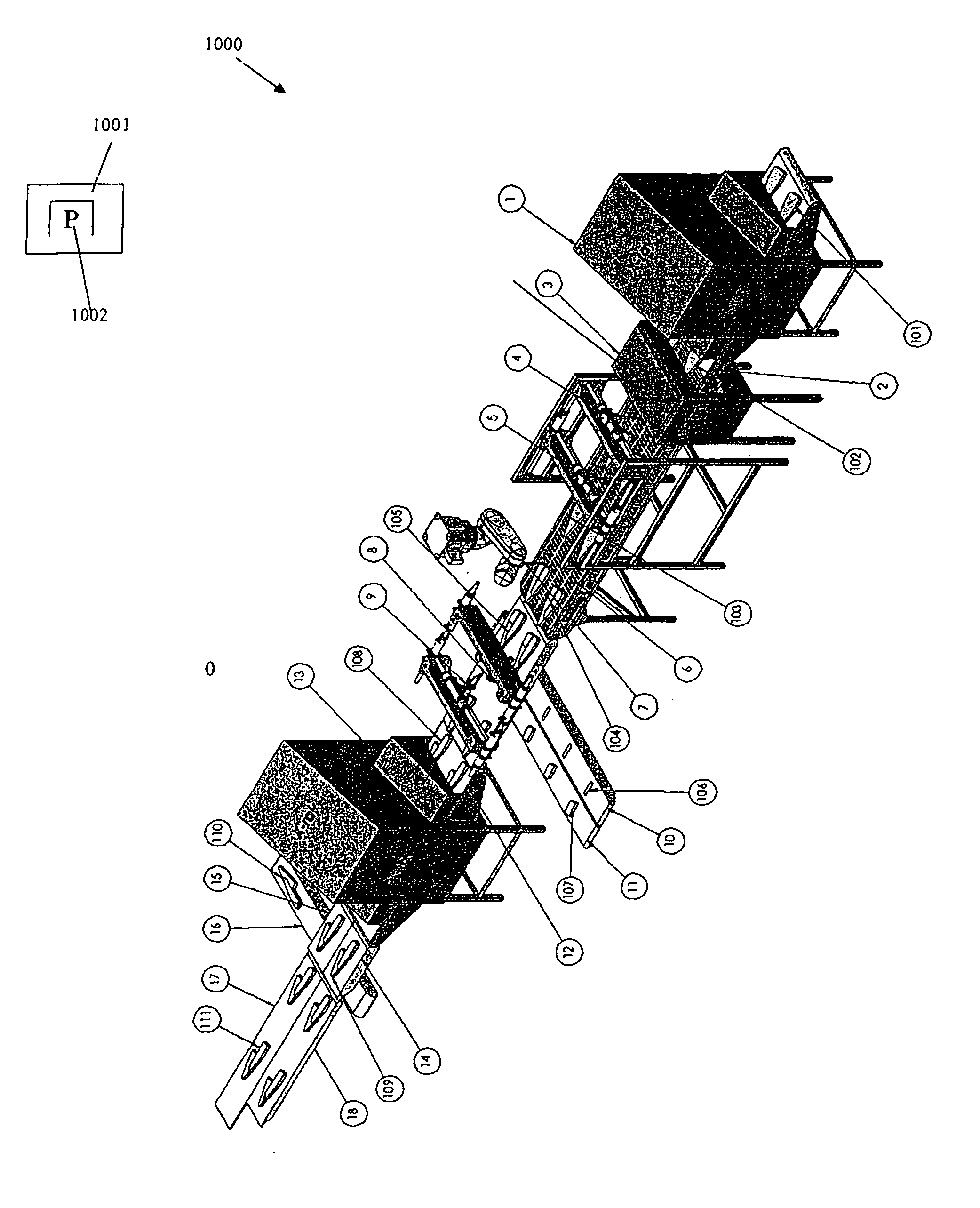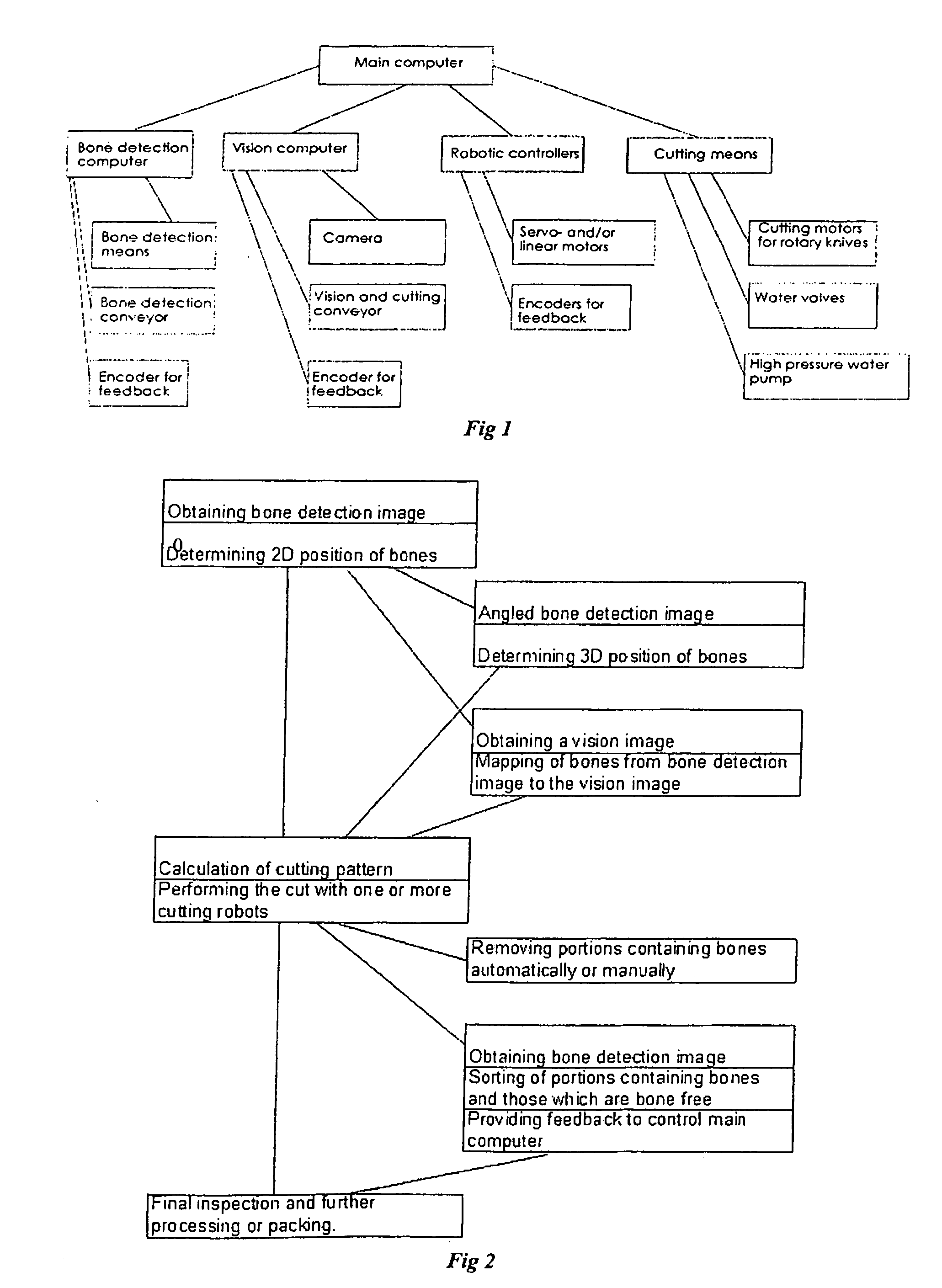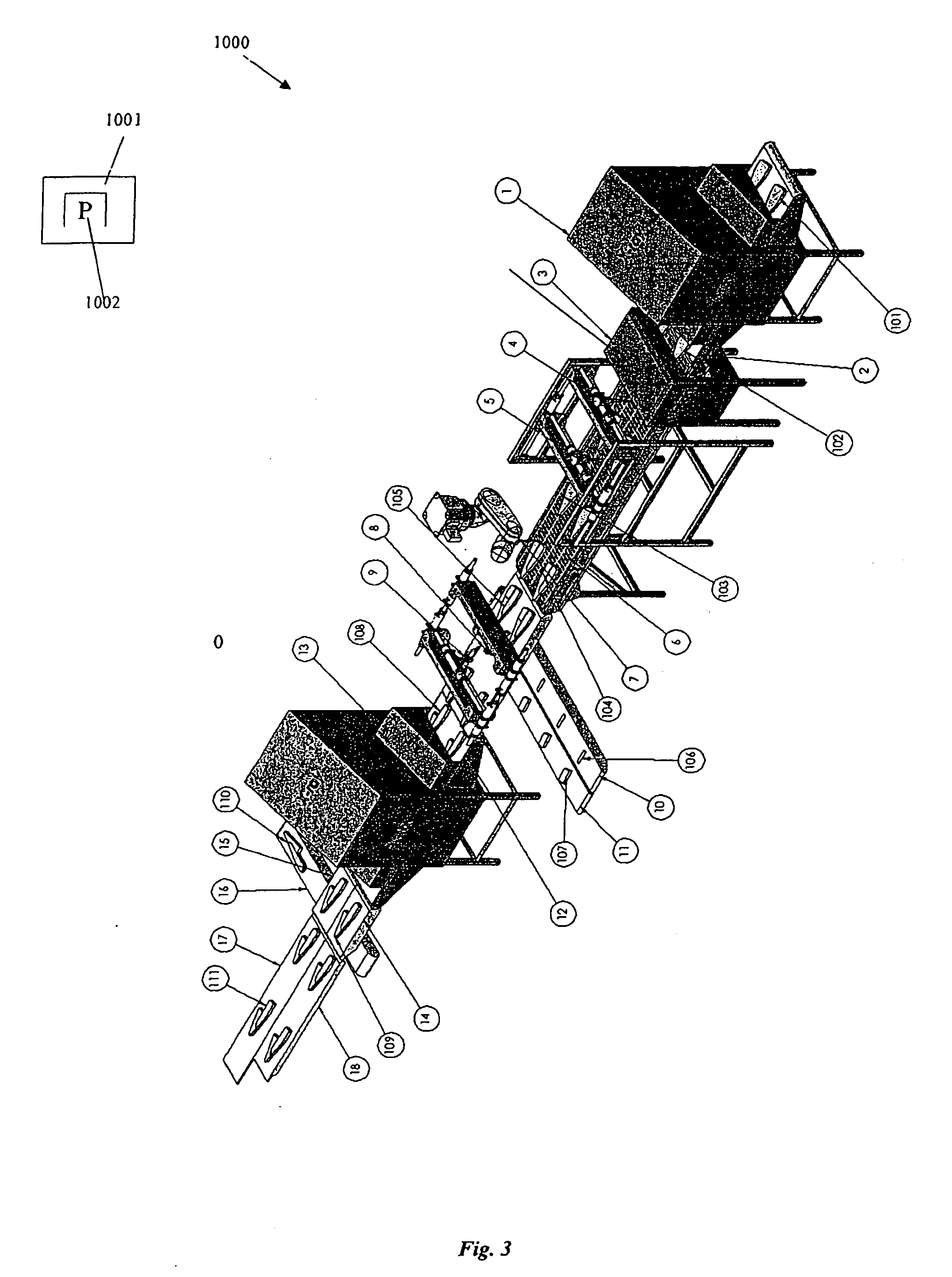[0012]It would be advantageous to achieve a
food processing apparatus that makes it possible to detect and remove tough tissues from foot item pieces such as fish fillets and thus increase the cutting yield. In general, the invention preferably seeks to mitigate, alleviate or eliminate one or more of the above mentioned disadvantages singly or in any combination. In particular, it may be seen as an object of the present invention to provide a food
processing apparatus that solved the above mentioned problems, or other problems, of the prior art.
[0025]Thus, by providing such a correction by mapping the detected location of e.g. bones in fish fillets over to the second image data, the bones become transferred over to the coordinate
system of the vision
camera image (the second image data) so that the x-ray data match the second image data. Thus, if e.g. the transfer from said first conveyor (“x-ray conveyor”) to the second conveyor (“cutting conveyor”) causes the
fish fillet to move 1 mm to the side so that the x-ray image data and the second image data do not match, it will be ensured that this will be corrected, i.e. the x-ray data will be “moved” 1 mm back so that they match with the second image data. Based on the above, a food
processing apparatus is provided that is capable of cutting said tough tissues, e.g. remove bones from fish fillets, fully automatically with high accuracy. Also, the fact that the conveyed
food item pieces are at no time stopped during said
processing, i.e. imaging and cutting, means that the processing speed becomes very high and therefore the productivity of the food processing apparatus. Thus, a complete food processing apparatus is provided that can
cut food items into portions with higher accuracy than previously possible. The benefit of increased accuracy is that the apparatus is capable of minimizing the size of the tough tissues portions such as bones by cutting as close to the bones as possible. In the following we will refer to increasing the cutting yield as the apparatus can
cut closer to the tough tissues and can thus minimize the size of the items containing tough tissues. It should be noted however that for practical production reasons it might be feasible to keep some of the portions hanging together and thus not cut entirely between the portions during the cutting process. The food items can as an example be selected from
fish fillet, or meat or
poultry meat such as
chicken breast and the tough tissues can be bones, or
cartilage, fat stripes from the fillet and the like. In the following, it will be assumed that the tough tissues are bones.
[0043]In one embodiment, said vision
system is a
three dimensional vision (3D) system adapted to capture 3D image of said
food item pieces in addition to said 3D x-ray image data, the comparing by said processor the estimated position of the food item pieces on said second conveyor to the actual position on the second conveyor based on said second image data comprising determining whether the total volume of the 3D x-ray image data matches with the volume of the 3D image data, where in case of non-match, mapping by said processor the volume of the 3D x-ray image data onto the volume of the 3D image data such that the volumetric error is minimized.
[0044]In one embodiment, said volumetric error is minimized by means of minimizing of the volumetric error being determined by said processor by means of minimizing the sum X+Y of the two volumes minus the common set X∩Y of the two volumes, where X is the volume determined by said two or more x-ray sources and Y being the volume determined by said 3D vision system.
[0052]Accordingly, the quality of the cutting can be monitored and eventually it is possible to make the necessary adjustments of the cutting device and in that way make a kind of feed-back correction for the cutting procedure.
[0054]In one embodiment, the x-ray machine comprises two or more x-ray sources placed at different viewing angles with respect to the incoming food objects adapted to emit x-ray beams onto the incoming food objects under said different viewing angles and thus generate at least two x-ray measuring data, the food processing apparatus further comprising a processor for generating said first image data by processing the at least two x-ray measuring data for generating three dimensional x-ray image data of said tough tissues. The image data can thus be implemented to determine a cutting angle which will result in maximizing the cutting yield because such a 3D image allows determining the angle of the bones /
cartilage or even better a precise location of the bones / cartilage in a full three dimensional image of the food item. For cheaper products where the cutting yield is not so important and a straight cut is sufficient a priory knowledge about the angle may be used. For expensive products where the cutting yield is really important the maximum cutting yield is sought and a more complex bone detection system will be used where an image of the food item will be taken with multiple cameras.
 Login to View More
Login to View More  Login to View More
Login to View More 


